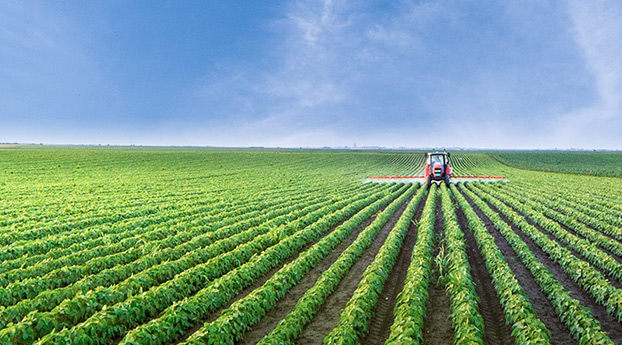Open up the "Ren and governor two veins", let the river flow smoothly
Release time:2017-03-10 Views:250
By the end of this year, Nanjing will basically eliminate black and smelly water bodies in built-up areas. In order to surround the city with clean water, in addition to improving the water quality, it is necessary to open up the "two veins" of the urban water system, and the Jinchuan River, Qinhuai River, Xuanwu Lake and Crescent Lake will be gradually realized. According to the target, by 2020, Nanjing will form a natural circulation water system and truly become a beautiful city of water surrounded by clean water.
Expand water refill gate and add water refill channel
Luo Ying, professor senior engineer and deputy chief engineer of the Municipal Water Bureau, introduced that according to the work plan, the municipal Water Bureau will start the expansion of the Big root gate from Xuanwu Lake to Jinchuan River this year, to increase the amount of water replenishment of Big root gate. At the same time, from the Wumiao Gate through the Pearl River to the eastern section of the Qinhuai River water, this gate should also be rebuilt. After the reconstruction, the daily water replenishment capacity of Wumiao Gate will be increased from the current 60,000 tons to 120,000 tons.
In addition to these two gates, the gates that supply water from Xuanwu Lake to the inland river, Taipingmen Gate Gate, Xianglinsigou Gate Gate and Jiuhuashan Gate Gate will also be rebuilt. It is understood that Jiuhuashan gully gate gate is an important channel for water supply from Taiping gate to the Qinhuai River, but due to failure, it can not be normal water supply at present. The water department plans to re-use this water supply channel, so all the locks along the line will be rebuilt.
The city plans to divert water from the Xiangfang Village pumping station near the East Water Pass to the Crescent Lake (southeast moat) to replenish water. This water replenishment channel is a new water replenishment channel which diverts water from the outer Qinhuai River.
The whole river basin is completely cut off pollution to realize zero sewage discharge
Walking along the Qinhuai River, you can see a ditch along the river. This is no ordinary ditch. It's a sewage ditch. Within the Qinhuai River as an example, many rivers in our city are such a pollution interception mode - interception ditch. Intercepting ditch is the product of the 1980s, that is, the shore whether rainwater or sewage all into the ditch. When it does not rain, the water in the ditch can enter the municipal sewage network, but when it rains, rainwater and sewage will enter the river. Coupled with the sewage ditch age is too long, many of the phenomenon of damage, so in many rivers, sewage is difficult to completely intercept.
The city is carrying out the action to create the drainage standard area, the main urban area, especially the old urban area to carry out the rain and pollution diversion project, this can solve the problems of the sewage ditch, play a thorough pollution interception, river zero discharge into the role. The city will spend three years to complete the separation of rain and pollution, at the same time, improve the city sewage collection and treatment capacity. After the diversion of rain and sewage, urban sewage can be collected and treated to realize zero discharge of sewage into the river. Rainwater enters the channel, but not directly. "Through the construction of sponge cities, there will be more and more wetland, concave green space in the city, which can purify rainwater." After this initial purification, rainwater is discharged into the river, Luo said.
More water will be added to the Yangtze River, making ecological water replenishment more scientific
This year, the water supply channel to the inland water will increase, plan from the seven bridge urn outside the Qinhuai River water to the southeast moat water, and then the Mingyu River and the inner Qinhuai River can also synchronize water. Here, however, the water from the outer Qinhuai River will be upgraded -- a new water purification plant will be built next to the existing pumping station at Qiqiaoweng, and the water from the outer Qinhuai River will be initially purified before flowing into the southeast moat.
In the north of the city, Damiao Ditch is an important tributary of the Jinchuan River. This 1,800-meter-long ditch, which used to be a heavy black and smelly smelly ditch, has now quietly changed its face: the surrounding shantytowns have been demolished, the river has completed pollution and silt removal, and the surrounding environment has been improved. After the completion of Damiaogou renovation, the water quality of Jinchuan River has also been improved. Damiao Valley can connect the outer Jinchuan River and the Yangtze River to increase water supply.
Instead of just diverting water, more attention is paid to the scientific ecological water replenishment, which is the principle followed by water replenishment in the future. The plan is to increase the amount of water diverted from the Yangtze from the current 280,000 cubic meters to 600,000 cubic meters per day with the expansion and renovation of the chemical fiber plant, which will allow more Yangtze water to enter the inland river.
"Eliminating black and smelly rivers is only the first step in improving the urban water environment." Luo Ying introduced that by the end of this year, the black and smelly river regulation will be basically completed, and then the city will also through the water system through the construction of drainage areas up to the standard, so that the water quality of the urban river. By 2020, citizens will see Nanjing, a beautiful city with natural circulation of rivers and clear water around the city.
Source: Nanjing Daily, page A8, March 10, 2017

















